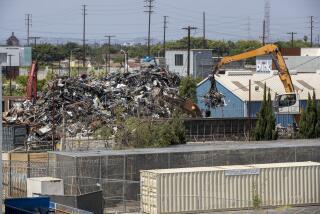Study finds dramatic drops in L.A. beach pollution since 1970s
Metal contaminants in Southern California coastal waters have plummeted over the last four decades, according to a new study that attributes the cleaner water to 1970s environmental regulations.
The improvements are so dramatic that, in some spots, USC researchers found the levels are now comparable to those found on remote stretches of the Baja California coastline.
Researchers found a 100-fold drop in concentrations of lead and a 400-fold decline in copper and cadmium off the coast of Los Angeles County since the 1970s, even as the region’s population grew by millions.
“We were expecting them to be lower, but not that low,” said Sergio Sañudo-Wilhelmy, a USC professor of biology and earth sciences who led the research.
Researchers credit sewage treatment restrictions of the 1972 Clean Water Act and the phase-out of leaded gasoline in the 1970s and 1980s with keeping toxic metals from reaching the ocean.
For the study, scientists collected surface water samples from more than 30 sites between Point Dume and Long Beach, the same places tested for metals by a pair of UC Santa Cruz researchers in the 1970s. The samples were gathered off some of the most popular Southern California beaches — Malibu, Dockweiler and Santa Monica Bay, among them.
Though the concentration of metals is just one measure of water quality, Sañudo-Wilhelmy said, “it’s a good indicator of the health of the environment. It’s a sign that when we remove the stress from the environment, it seems to be resilient and go back to background levels within years.”
Not everywhere showed such vast improvement.
The study found that relatively high levels of metals have persisted near the outlets of the Los Angeles River and the San Gabriel River, where contaminated runoff drains into the ocean. Those findings suggest the region has significant progress to make when it comes to polluted storm water.
“The trend is positive,” Sañudo-Wilhelmy said. “Now it’s up to society to decide how much they want to spend to clean the water even more.”
More to Read
Start your day right
Sign up for Essential California for news, features and recommendations from the L.A. Times and beyond in your inbox six days a week.
You may occasionally receive promotional content from the Los Angeles Times.







